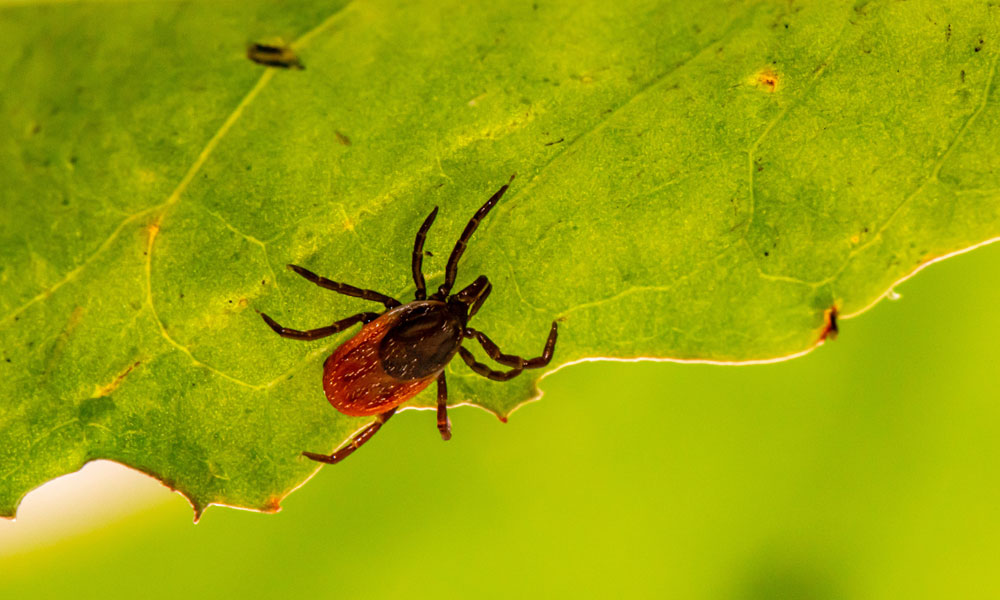
Getting ready for tick season
It may be February but tick season seems to be getting longer year on year, Milder winters and wetter summers mean that you’re more likely to find one of these critters on your pet almost all year round. You might think that ticks are harmless but they need to be removed properly or they can cause problems for your pet and spread diseases, so just before they start popping up again in your pets fur, lets take a closer look at ticks and why it’s important to protect your pet from them.
 Terrier photo by Laura Baker on Unsplash
Terrier photo by Laura Baker on Unsplash
What is a tick?
A tick is a parasitic pest that latches onto pets and other animals in order to feed on their blood. They vary in size and colour and are usually reddish brown or pale grey, measuring from 1mm to 1cm across, they may look like a small pebble or skin tag on your pet and will get bigger if they remain untreated as they begin to gorge on your pet’s blood. A smaller tick that is not full of blood can also look a bit spider-like as they have eight legs.
Ticks are commonly found in woodland, grassland and heathland, but you may find that you have them in your garden if you live somewhere with a lot of wildlife. They thrive in the warmer months, near populations of deer and sheep but they are actually active all year round.
 Tick photo by Erik Karits on Unsplash
Tick photo by Erik Karits on Unsplash
How do I spot a tick on my pet?
Ticks don’t fly or jump, they tend to lie in wait for your pets and drop onto them if they are running about in undergrowth or climb aboard if they are lying in long grass. You can find them by simply stroking your pet as you should be able to feel a small bump. They do not come off easily and the best way to remove them is by using a small tick twisting removal tool that you buy easily online or from a pet shop or vet. It is worth keeping one handy at all times so you can get rid of them quickly before they have a chance to become a nuisance. Sometimes if a tick has been on your pet for a while they may have a reaction and their skin around the tick may be scabby or swollen too.
 Ginger cat photo by Dorothea Oldani on Unsplash
Ginger cat photo by Dorothea Oldani on Unsplash
How to remove a tick
The best way to remove a tick is with a tick-removal tool. Be very careful not squeeze the tick’s body or pull them. If you pull too hard the tick’s head will detach and stay inside your pet, potentially causing an infection. Likewise if you squeeze the tick it may vomit your pet’s blood back into their bloodstream and this can also cause an infection. These tick removal tools are also suitable for getting ticks off of humans too and having used one on myself I can assure that they don’t hurt and the tick simply pops off. Both my cats and dog are always very well behaved when I remove ticks in this way and the trick is to stay calm and approach it with confidence.
Once you’ve found the tick, part the hair around it and slide the tick removal tool underneath the tick. Most removal tools come with a selection of sizes in one packet, so choose one appropriate for the size of the tick. Carefully slide the tool under the tick so that the two prongs of the tool are either side of it. It can sometimes take a couple of goes to get this right so stay calm and keep reassuring your pet as you go.
Next, gently turn the tool in one direction and you should feel a pop as the tick comes off of your pet. Once you have removed the tick make sure you kill it and dispose of it (I always flush mine down the toilet) so that it won’t find its way back onto your pet or any other animals. Check your pet’s skin to ensure that it has been completely removed.
 Tick photo by Erik Karits on Unsplash
Tick photo by Erik Karits on Unsplash
How can I protect my pet from ticks?
Most spot-on flea treatments will also protect your pet from ticks so if you live in an area where there are a lot of ticks then make sure when you choose a flea treatment that it will repel or kill ticks too. If you’ve treated your pet with a spot-on and they are still coming home with ticks, then this could be because the treatment that you have chosen kills ticks slowly rather than repelling them so check the instructions to see how it works and if you’re still not convinced that it is working effectively, try a different treatment. Also make sure that if you have cats and dogs that you are suing the right treatment for them as some dog treatments can be harmful to cats, you also need to take care if you’re using a spot on and your cat and dog spend a lot of time close together as it could harm your cat this way too.
 Retriever photo by Angel Luciano on Unsplash
Retriever photo by Angel Luciano on Unsplash
Tick-borne diseases
As well as being a nuisance and causing inflammation in pets, ticks also spread diseases between different animals. If your pets spend any time on your bed or furniture then you also need to be careful that they don’t transfer any ticks to you as they can also cause serious disease in humans.
Ticks transmit microbes that cause diseases, such as Lyme disease and Babesiosis. Lyme disease is a serious bacterial infection which can harm pets and humans. If you live or walk your pets near deer or sheep then they are more likely to catch it so always be vigilant for ticks in these areas.
If your dog has Lyme disease, you may notice they lose their appetite, seem depressed, have swollen joints or lymph nodes. These could also be indicative of other diseases so if you ave any concerns at all then take your dog to the vet for a diagnosis and they can treat your pet effectively with antibiotics. Babesiosis is much rarer, which means it is often easier to misdiagnose. At present it is only found in Southern England but again, if you have any concerns about your dog’s health after they have been exposed to a tick in this area, then it is worth bringing it up with your vet.
If you’re taking your dog on holiday abroad then it is worth bearing in mind that ticks in other countries can pass on different types of diseases, so ask your vet for advice on the best kind of preventative treatment to use so that the ticks don’t ruin your holiday.
Main Cat Photo by Dorothea Oldani on Unsplash
